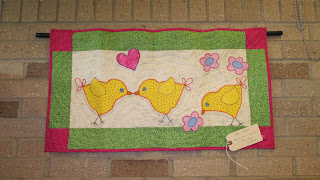While I read the essays in The Books that Changed My Life I thought about what books had changed my life. I concluded that what I read as a child set the direction of my adult reading life. And the books I heard read out loud by my teachers at Phillip Sheridan Elementary School in Tonawanda, NY. Each classroom had a small library and I would find the book my teacher had read and brought it home. The school was new and the books were new too. Now they are classics.

 Charlotte's Web taught me the value of friendship and to never stereotype. Templeton the rat and Charlotte the spider are creatures we are taught to fear and avoid, but in E. B. White's book they become beloved friends. Charlotte also loves words! I don't think any book made me more aware of the meaning of friendship than Charlotte's Web.
Charlotte's Web taught me the value of friendship and to never stereotype. Templeton the rat and Charlotte the spider are creatures we are taught to fear and avoid, but in E. B. White's book they become beloved friends. Charlotte also loves words! I don't think any book made me more aware of the meaning of friendship than Charlotte's Web.Mr. Popper's Penguins is about a man who dreams of going to the South Pole and ends up with penguins to care for. He returns the penguins to Antarctica.
It led to The Great White South about Robert Falcon Scott's fatal journey to the South Pole, which led to I May Be Some Time: Ice and the English Imagination by Francis Spufford which led to White Eskimo about Knud Rasmussen. Polar exploration has always fascinated me. Plus, it is about restoring animals to their rightful place.
Homer Price made a big enough impact that I named an imaginary friend after him--Home the Ghost who went to school with me each day.
I wanted to grow up to BE Mrs. Piggle Wiggle. I imagined my hair in a white bun and being surrounded by the neighborhood children.
Before the Disney movie, Bedknobs and Broomsticks was a huge favorite of mine. What adventures! It led to fantasy books like Terry Pratchett.
Follow My Leader about a boy and his guide dog led to enjoying books about resilient people and the love of a good dog story. (See Rags, the WWI Hero!)
A Child's Garden of Verses by Robert Louis Stevenson gave me a love of poetry. (My son loved Windy Nights and recited it to himself as a toddler.)
A Child's Garden of Verses led to discovering One Hundred and One Famous Poems on my grandfather's bookshelf, along with the poetry of Edgar Allen Poe-- which lead to Robert Hillyer, Walt Whitman, T. S. Eliot, Ezra Pound, Emily Dickinson, Anne Sexton, and Ranier Marie Rilke.
A biography of Stevenson from my classroom library was my first biography! That led to reading about Clara Barton, Jane Addams, Joan of Arc in junior high. And I still enjoy a good biography to this day.
 Books read out of school as a girl left their mark, too.
Books read out of school as a girl left their mark, too.Starting with the books Mom brought home from the A&P--The Little Golden Books. They also gave me a real love of art with illustrators like Mary Blair, J. P Miller, Garth Stein, Eloise Wilkens, Gustaf Tenggren, Leonard Weisgard, Feodor Rojankovsky, and Alice and Martin Provensen! I loved the story of Pantaloon and also Lucky Mrs. Ticklefeather.
Mom brought home another grocery store series of chapter books that included Grimm's Fairy Tales, Alice in Wonderland, Pinocchio, East of the Sun, West of the Moon, The Black Arrow, Treasure Island, and others.
My first trip to the public library I brought home The D'Aulaires' Book of Greek Myths. I had several Fairy Tale books which led to Carl Jung and Bruno Bettleheim.
I came across a fake memoir that I loved as a girl, The Cradle of the Deep by Joan Lowell. It told about a girl's life growing up on a trading ship in the South Seas. I never thought about if it was fiction or memoir. All I knew was it was fascinating and made me want to go to sea in a sailing ship. It led to an interest in Capitan Hornblower and sea shanties and Master and Commander.

In Sixth Grade I was in Junior Great Books. A Christmas Carol and The Happy Prince were my favorites. The school library was antique. I found the Oz books, The Wind in the Willows, Alice in Wonderland, Peter Pan, and all the children's classics I had not read.
The Classics Illustrated Comic Books I loved as a girl impelled me to tackle reading the classics in junior high including The Count of Monte Cristo, Jules Verne's sci-fi, Lord Jim, Pudd'nhead Wilson, Les Miserables, and Jane Eyre.
I have never forgotten those early books. It was wonderful to revisit them with our son. I can only believe that our son's love of reading dates back to the books read to him when he was growing up.













































